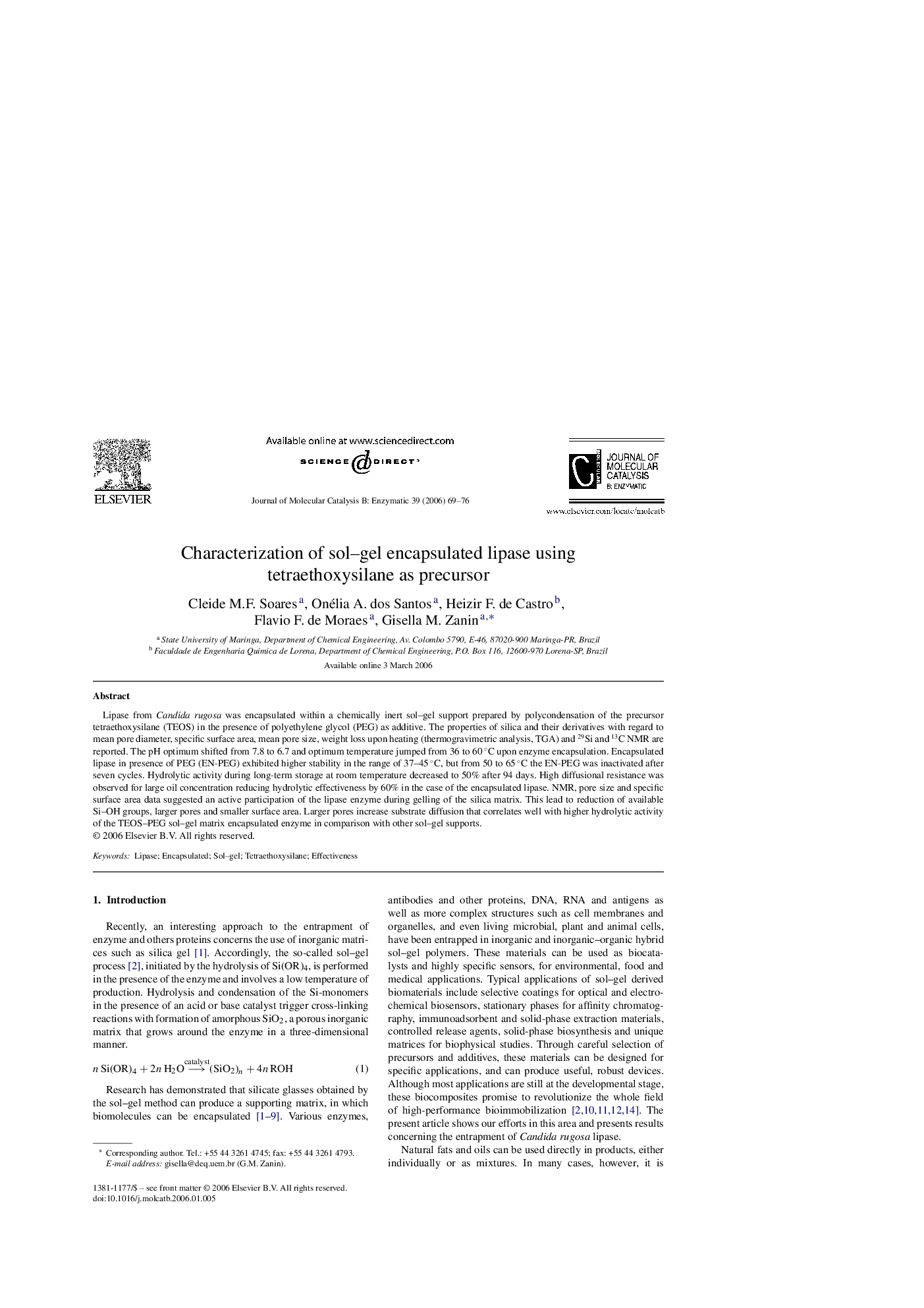| Article ID | Journal | Published Year | Pages | File Type |
|---|---|---|---|---|
| 71222 | Journal of Molecular Catalysis B: Enzymatic | 2006 | 8 Pages |
Lipase from Candida rugosa was encapsulated within a chemically inert sol–gel support prepared by polycondensation of the precursor tetraethoxysilane (TEOS) in the presence of polyethylene glycol (PEG) as additive. The properties of silica and their derivatives with regard to mean pore diameter, specific surface area, mean pore size, weight loss upon heating (thermogravimetric analysis, TGA) and 29Si and 13C NMR are reported. The pH optimum shifted from 7.8 to 6.7 and optimum temperature jumped from 36 to 60 °C upon enzyme encapsulation. Encapsulated lipase in presence of PEG (EN-PEG) exhibited higher stability in the range of 37–45 °C, but from 50 to 65 °C the EN-PEG was inactivated after seven cycles. Hydrolytic activity during long-term storage at room temperature decreased to 50% after 94 days. High diffusional resistance was observed for large oil concentration reducing hydrolytic effectiveness by 60% in the case of the encapsulated lipase. NMR, pore size and specific surface area data suggested an active participation of the lipase enzyme during gelling of the silica matrix. This lead to reduction of available Si–OH groups, larger pores and smaller surface area. Larger pores increase substrate diffusion that correlates well with higher hydrolytic activity of the TEOS–PEG sol–gel matrix encapsulated enzyme in comparison with other sol–gel supports.
